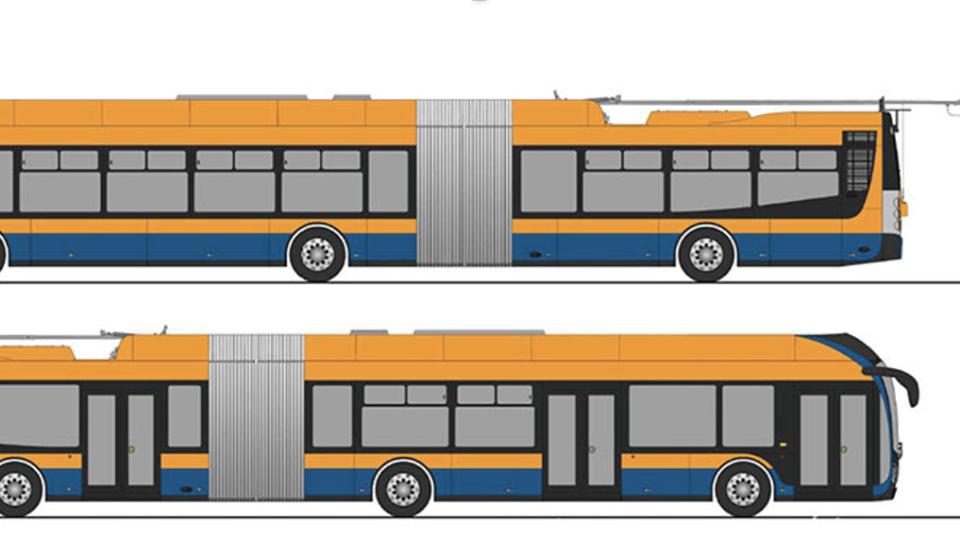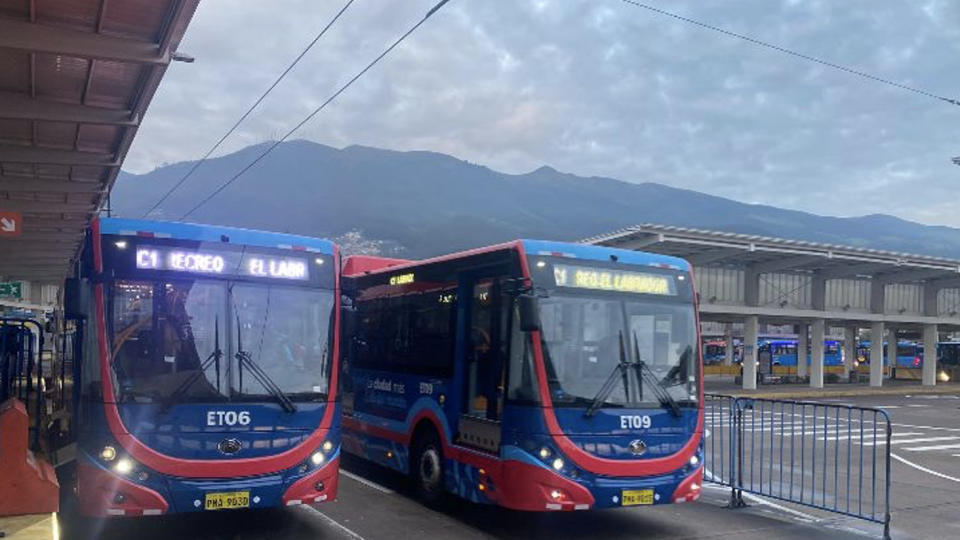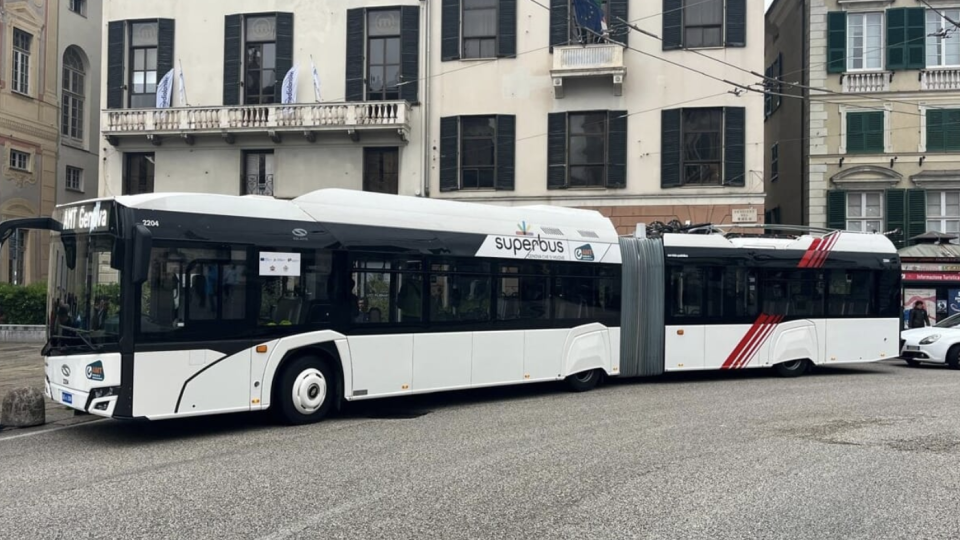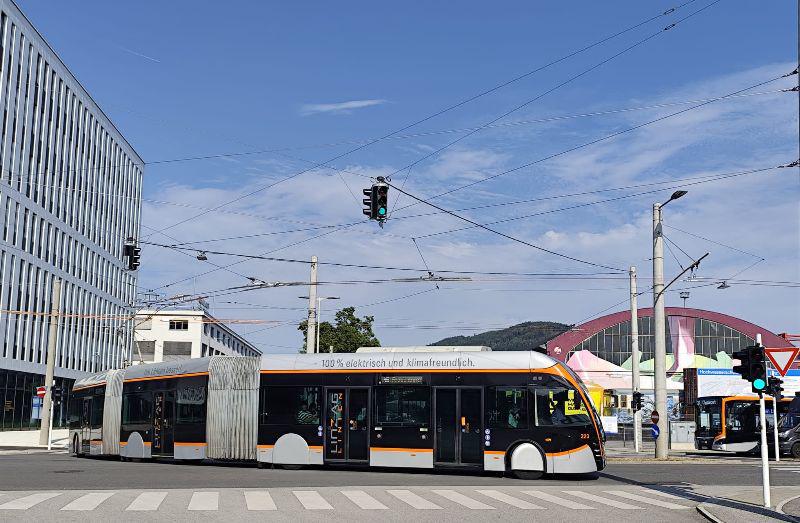Trolleybus. A growing demand thanks to zero emission operations
Trolleybus projects and investments are on a rise in several European countries. Switzerland, France, Austria, Italy, Poland, Czech Republic are among the countries where trolleybus networks are more diffuse. Significant renewal plans are underway. Also Berlin is considering new investments on this technology. On the other side of the Atlantic Ocean, Mexico City is giving […]
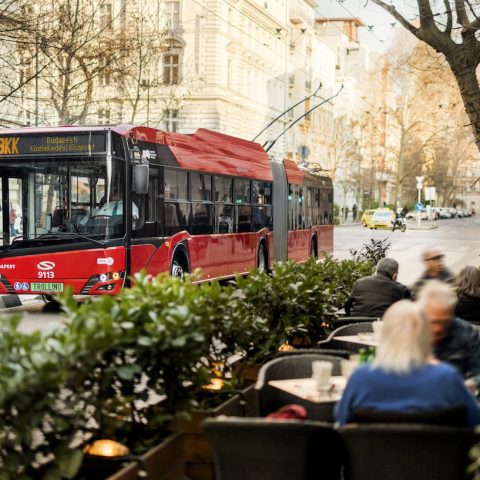
Trolleybus projects and investments are on a rise in several European countries. Switzerland, France, Austria, Italy, Poland, Czech Republic are among the countries where trolleybus networks are more diffuse. Significant renewal plans are underway. Also Berlin is considering new investments on this technology.
On the other side of the Atlantic Ocean, Mexico City is giving ‘fresh air’ to its trolleybus fleet as well. Electric bus growing deployment is not the only protagonist of the energy transition in city public transport.
Once fitted with a diesel motor-generator and unable to break the constraints of connection to overhead powerlines, today, thanks to battery systems (In Motion Technology), trolleybuses are reinventing themselves as vehicles that can combine zero emissions with flexibility. Hess, Iveco Bus, Skoda Electric, Solaris Bus & Coach and Van Hool are the main industry players.
In this article, we at Sustainable Bus (with extensive contributions from Stefano Alfano) tried to sum-up news, case studies and developments from the dynamic trolleybus sector.
Tallin government to procure 40 battery-electric trolleybuses
In February 2024 Tallinn municipal government, in Estonia, has decided to invest in 40 battery-powered trolleybuses and upgrade the contact network. This decision comes after 24 years of transitioning from trolleybuses to buses (with heavy commitment to CNG drivetrains). The city council mandated Tallinn City Transport AS to procure 40 new battery-powered trolleys and revamp the trolleybus infrastructure. The fleet will include 22 long (18 meters) and 18 regular (12 meters) trolleybuses. The cost estimate for the trolleys is approximately €30 million.
Skoda won the tender with its new model 32 Tr. Test and homologation of the vehicles was carried out in April.
Solaris sent a Trollino trolleybus in Canada
A trolleybus Trollino is the first vehicle tested by Solaris Bus & Coach in North America, in September 2023. In the coming years, the manufacturer “is considering offering exclusively zero-emission vehicles on those markets, i.e. battery, hydrogen, and trolleybuses“.
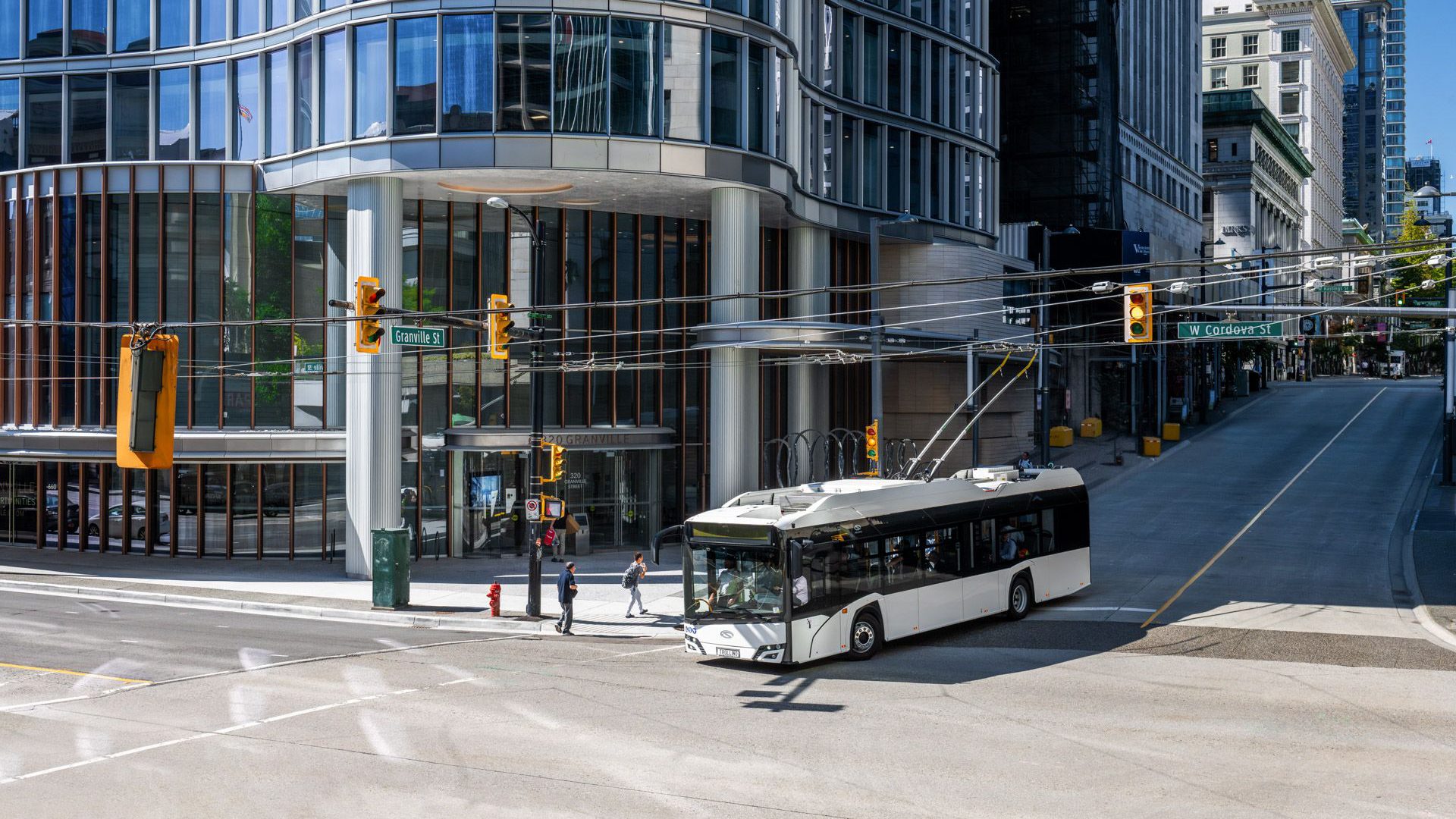
The OEM adds that “The current trolleybus fleet in Vancouver consists of 262 vehicles that were delivered to the metropolis between 2006 and 2009. The carrier intends to renew its fleets by the end of this decade. Trollino’s presentation in Vancouver is another step in the implementation of Solaris’ strategy of entering the USA and Canada with its offer”.
The intention of the company to enter North American market has been highlighted several times by Solaris delegates in the last couple of years. Solaris would rely on its owner CAF’s network in the region.
91 Skoda trolleybuses ready for Vilnius
In May 2023 Škoda Group has won the tender for the delivery of trolleybuses in Vilnius, Lithuania. The contract with transport operator JSC “Vilniaus viešasis transportas” includes the delivery of 91 Ško-da 32 Tr vehicles with a total value of more than 52 million euros. The Lithuanian capital’s fleet will thus receive modern vehicles that will contribute to a cleaner and healthier living environment. The trolleybuses will be con-signed between 2024 and 2025.
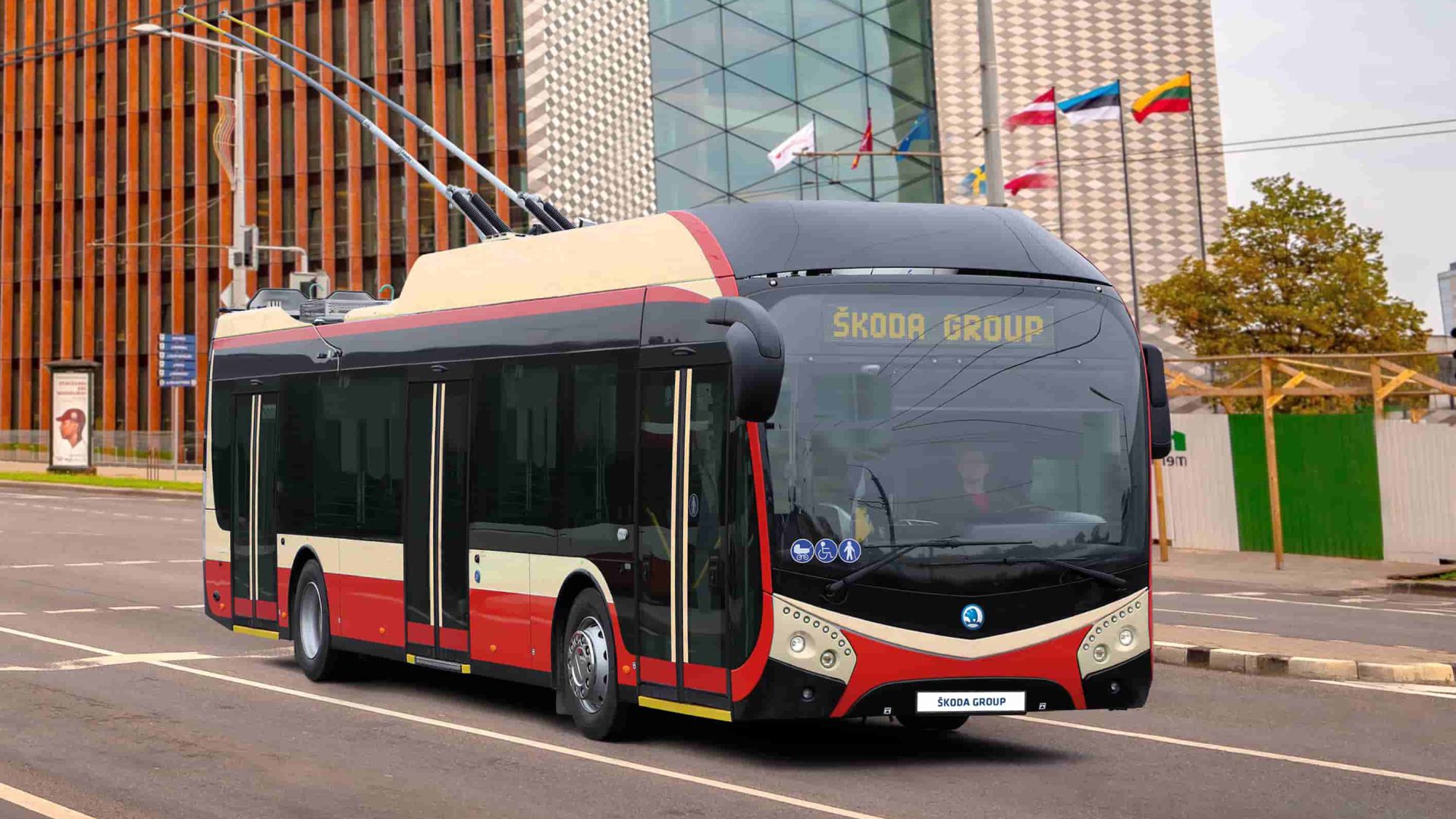
The contract represents another success for the group in the region. Since 2018, a total of 41 trolleybuses with Škoda traction equipment have been operating in Vilnius, while another 125 trolleybuses were previously delivered by the group to Riga, Latvia. This makes the company one of the leading trolleybus manufacturers in Europe in the long run. In addition to trolleybuses, Škoda has delivered 13 double-decker trains in Lithuania and is interested in other orders for electric train units.
In late 2022 Skoda had also won a tender for 53 new trolleybuses for the city of Pilsen, in Czech Republic. Another major tender in the same period was awarded in Bucharest. Winner? Solaris.
Fuel cell range extender on Trolleybuses. In Riga
Interesting advancements from the technological point of view are being tested in Riga (Latvia’s capital), where a batch of trolleybuses has been equipped with a fuel cell range extender for the very first time. The innovative concept that is carrying passenger on route 4. The public transport operator Rīgas satiksme informed on 24th March 2020 that all the ten hydrogen-driven trolleybuses began operations.
Italy, trolleybuses are not old-fashon vehicles
Milan bets on Solaris trolleybuses
In Italy, trolleybuses are still bound to have a major role in Milan, where the municipal operator ATM has set a plan to reach 2030 with a fully zero emission public transport fleet. In this framework it is included the large order for as many as 30 Solaris Trollino 18 (the agreement is for 80 vehicles). The first vehicle reached Milan in summer 2019. Some technical issues delayed the beginning of operations of the vehicles, that should roll out in spring 2020.
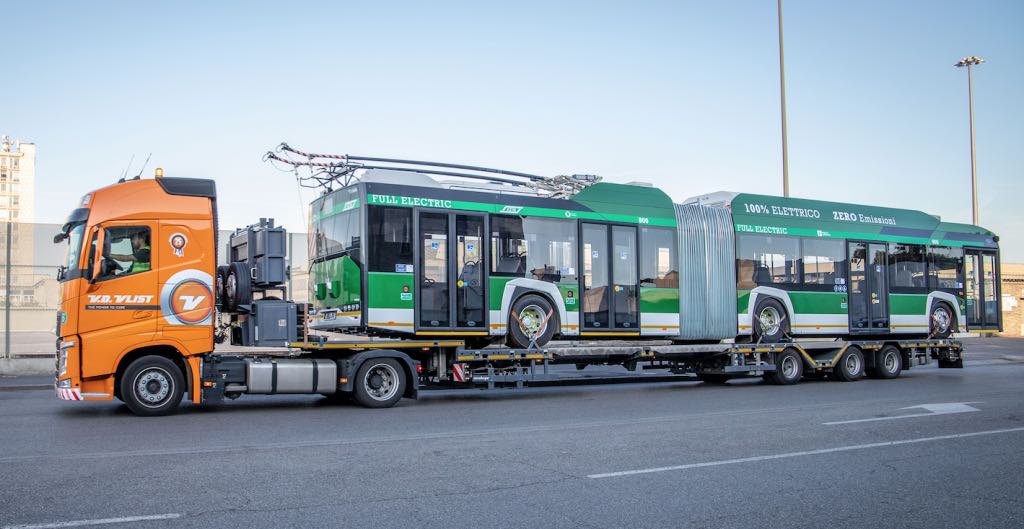
Modena and Parma to get a total of 18 Trollino
And 18 Polish-made trolleybuses are also headed to Modena and Parma. 2020 is set to be a crucial year: the operators SETA Modena and TEP Parma, both providing carrier services in the Emilia-Romagna region in the North of the country, have placed orders for altogether 18 modern Solaris Trollino 12 vehicles.
The vehicles will feature among others a central traction motor and traction batteries with a capacity of 45 kWh and a cooling system, all of which will allow the vehicles to cover a much longer distance without the need to be attached to overhead wires. There is room for nearly 80 passengers.
Trolleybus-based plans in Genoa
Genoa also has trolleybus-based plans. The city has presented to the Ministry of Infrastructure and Transport a dossier on the implementation of the rapid mass transport system. As reported on Autobusweb, Genoa asked 650 millions euros to finance as much as 4 new public transport lines, served by trolleybuses. In spring 2019 in Genoa took place the inauguration of a three days pilot held by public transport operator AMT. In the spotlight, a trolleybus Van Hool Exquicity 24 meters long. The capacity is 180 passengers. And in January 2020 it was the turn of an Iveco Crealis to be tested on the city roads.
While the first version of the project was rejected by the government, a second version for trolleybuses in Genoa worth 478 million euros was presented in May 2020. The purchase of 145 new trolleybuses is part of the plan.
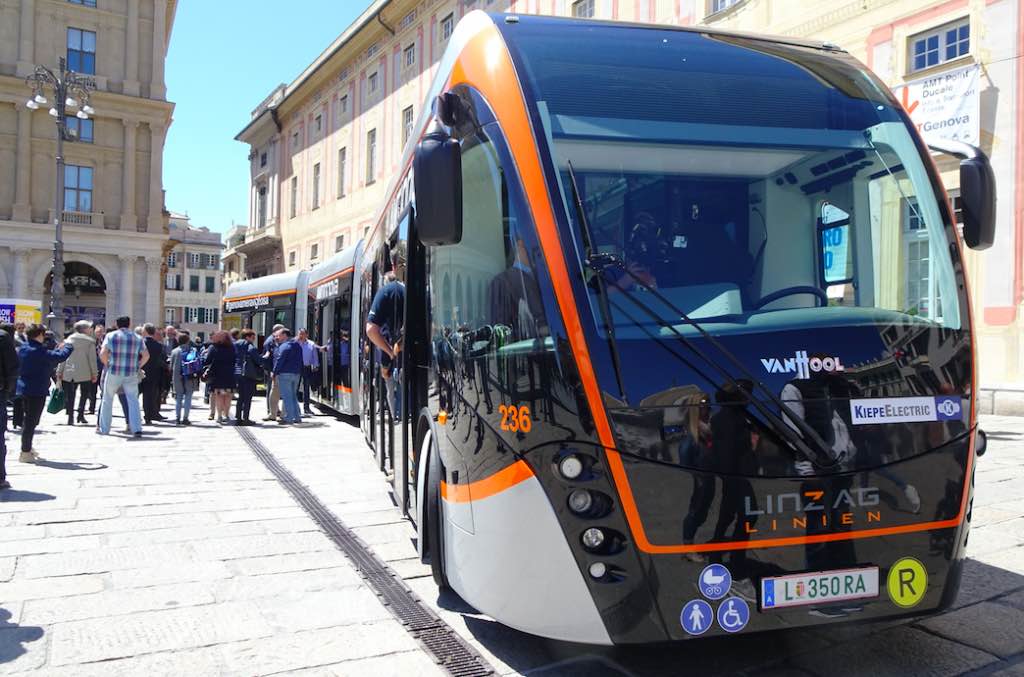
In France Iveco is the major trolleybus player
The Polish producer Solaris is also gaining ground in France. The order for 22 Trollino 12-meter for Saint-Etienne, signed in January 2019, marked the debut of the brand in the French trolleybus market. The vehicles will be fitted with a Skoda drive system and 40 kWh battery. The value of the contract is over 17 million euros.
Limoges bets on Iveco trolleybus
Remaining in France, several cities are placing new orders for brand new trolleybus with In Motion Technology. In September 2018 Limoges Métropole decided to invest in the new generation of Iveco Crealis. Precisely, the municipality choose the Crealis In-Motion-Charging, the new generation trolleybus announced in spring 2018 and, later that year, unveiled at IAA Commercial Vehicles in Hanover 2018. At the German exhibition it was awarded as Sustainable Bus Award 2019 in Urban category. The vehicle, equipped with an original Skoda Electric powertrain, was tested widely in 2019 in Nancy (France). Three units have been introduced on the busiest routes of Limoges network in autumn 2019, where they joined a fleet of some 30 trolleybuses.
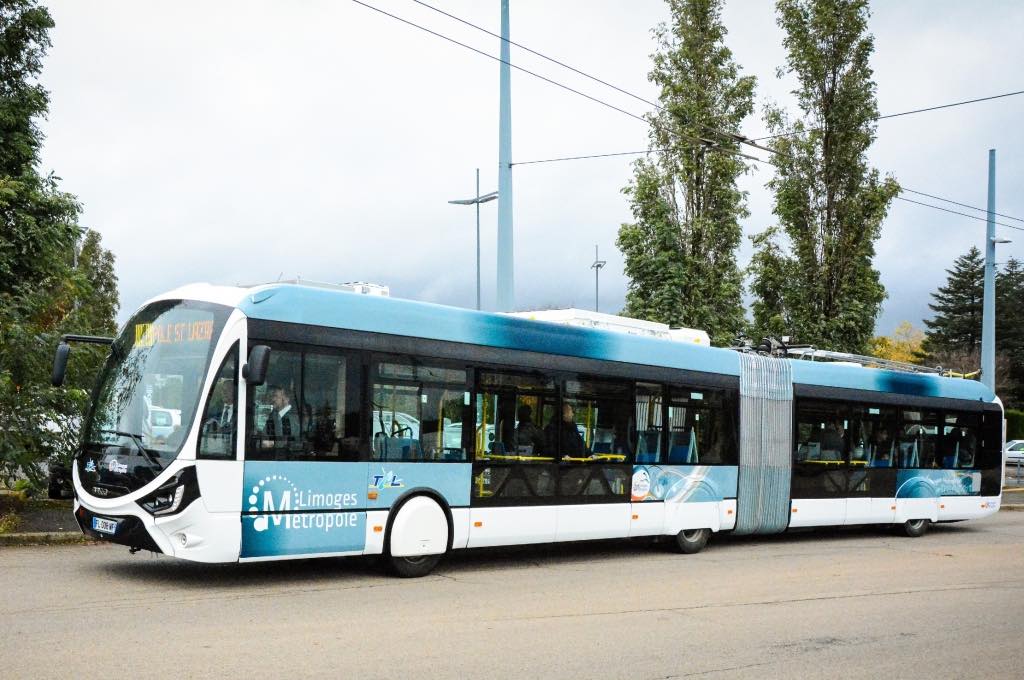
Still in France, in July 2018 Saint-Etienne Métropole voted for the In Motion Charging option for the STAS urban network. Saint-Etienne Métropole is one of the very rare cities in France still using trolleybuses in daily operations. A report, written with the Systra engeenering office and the STAS, conclude that the IMC would be the fastest a easyest way to fulfill the “Loi de Transition énergétique pour la croissance verte” for the Saint-Etienne urban network.
Lyon, tenders are coming
And Lyon is no exception. The SYTRAL (Lyon Metropolitan transport authoriry) released on friday 14th september 2018 his strategy to be compliant with the French environmental law which comes into force in 2020. The electro-mobility, with two different technologies get the widest share. Following Sant-Etienne, also the SYTRAL in Lyon announced the choice in favour of trolleybuses. The new generation of trolleybuses with In Motion Charging will represent an important part of the tenders to come on 2020 and beyond. In fact, six new lines will be fitted with such machines.
Bi-articulated trolleybus models on a rise
Hess is a major player in its domestic market, in Switzerland. The Swiss manufacturer, in fact, in early 2019 won the international call for tenders and the framework contract for the renewal of the trolleybus fleet in the Swiss city for 12 units. Lausanne prides itself to have one of the largest trolleybus fleets in Europe. Hess new generation trolleybuses are also in operation in Bern and Geneve.
In July 2024 the OEM has increased its trolleybus order book considerably with 100 units ordered between Lausanne and Lucerne.
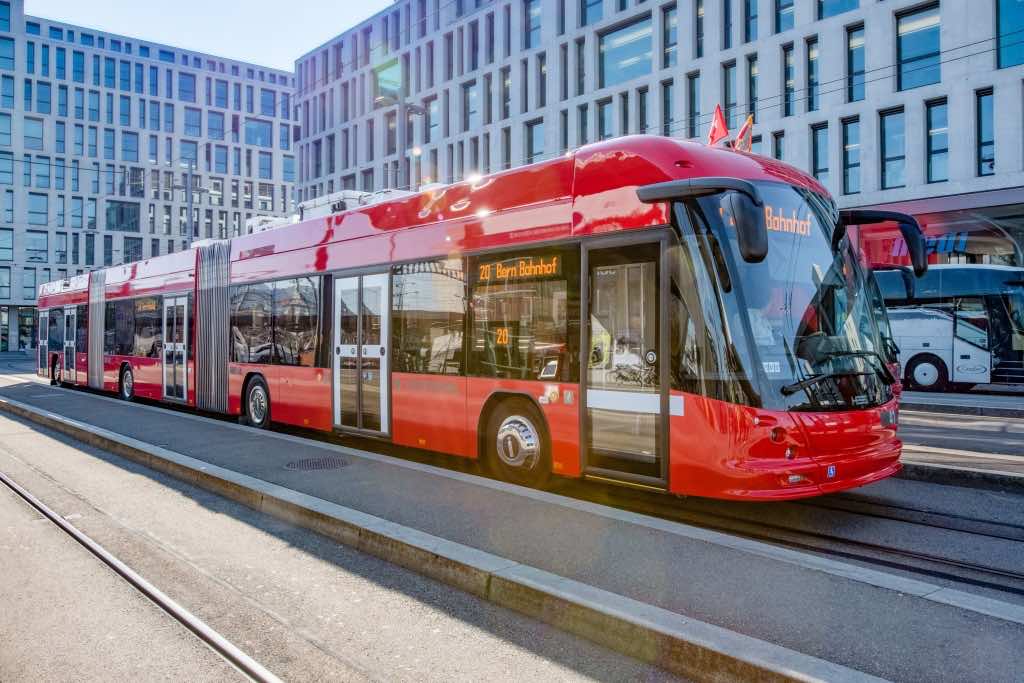
Still in Switzerland, Zurich’s public transport network looks forward to the future with new technologies and new trolleybus lines. Following the delivery of three 24-metre maxi trolleybuses in 2019, the operator VBZ Zurich is continuing to renew its rolling stock. Hess is once again the chosen industry player. In March 2020, deliveries began of 9 new trolleybuses, series 200-208, of the Lightram 19 type, 18.7 m long, equipped with four doors with IMC technology and battery pack.
Solaris, the 24-meter trolleybus is part of the family
Still on the topic of the 24-meter trolleybus, Solaris Trollino’s portfolio is not concluded with the 12 and 18-meter version. A 24-meter bi-articulated trolleybus is also part of the family. In February 2020 the Trollino 24 has received the Top Design Award handed out during the Arena Design 2020 event in Poznań. In late 2020 the Trollino 24 was on a pilot in Bratislava.
The vehicle, whose pictures started to be diffused in spring 2019, was launched in 2019, at the Busworld trade fair. In its distinctive MetroStyle version, the trolleybus is a response to the latest trends in the public transport industry. The trolleybus is driven by two traction motors of 160 kW each. Its pack of Solaris High Power batteries is recharged en route, collecting current from the overhead line.
Thanks to the batteries, the Trollino can also travel without any external power supply. This innovative model will also feature a number of amenities for passengers and the driver, enhancing safety and travel comfort. Cameras, in lieu of conventional mirrors, facilitate manoeuvres made with the bi-articulated vehicle.
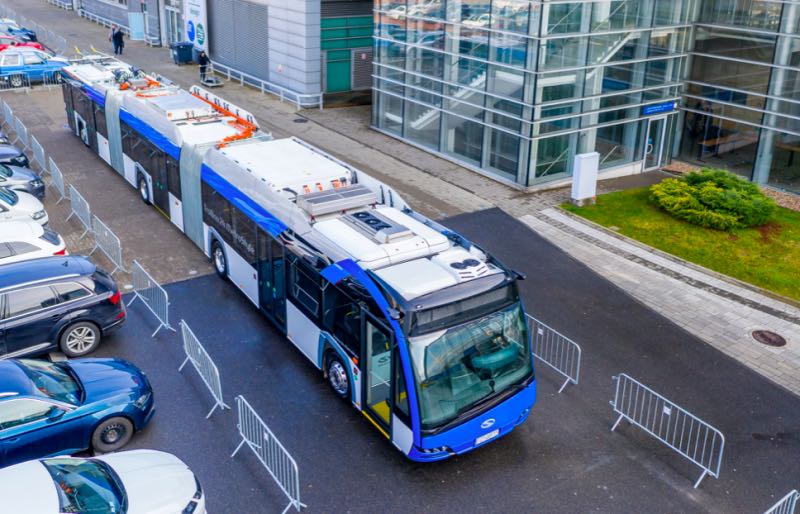
The first order for Solaris 24-meter trolleybus
The first ever 24-metre Solaris trolleybuses to come to market are set to Slovakia. A 16-units order has been commissioned in November 2021 by operator Dopravný Podnik Bratislava. The 24-meter trolleybuses will roll onto the streets of Bratislava within less than two years. The value of the contract amounts to nearly €17 million, Solaris points out. The entry in operation is scheduled for mid-2023.
These over-24-metre trolleybuses will provide space for 160 passengers, including 60 seated. Passenger counting sensors will be placed above the doors, arranged in a layout of 2-2-2-2-2. This innovative model will feature an array of amenities, enhancing safety and travel comfort.
Norway, the debut of Solaris trolleybuses
Following the order placed in 2019 by the Keolis Norge AS operator, Solaris has provided 10 Solaris Trollino 18 articulated trolleybuses to Bergen in late 2020. They are the first trolleybuses by Solaris ever deployed in the country.
The Trollino 18 ordered by Keolis Norge AS are powered by a 240 kW electric motor and equipped with 55 kWh traction batteries, thanks to which it is possible to cover a distance of over 11 kilometers without the need to connect to the catenary system, Solaris points out. The batteries are charged while driving with the use of ‘in motion charging’ technology, through current collectors mounted on the vehicle, which are connected to the overhead catenary.
Austria, trolleybuses are the backbone of Salzburg mobility
The Swiss company is well established in Austria as well, where in late 2018 it won a trolleybus tender issued by Salzburg, which has one of the largest trolleybus fleets in Western Europe in operation (around 110 vehicles running). The framework contract includes the supply of up to 50 vehicles, 15 of which are 18-metre trolleybuses and are to be delivered next year. The agreement also includes 24-meter trolleybuses.
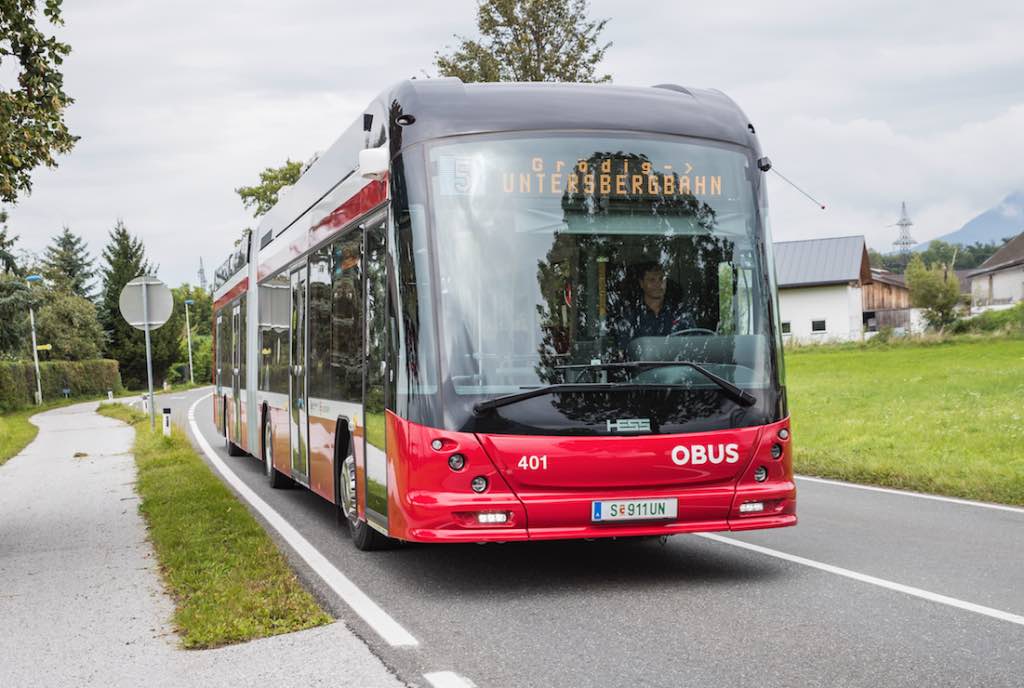
Eastern Europe. The home of trolleybus networks
Eastern Europe has developed a strong link with trolleybus technology throughout history. And still bets on this category of vehicles, that represent the backbone of public transport systems in several cities.
Poland, where Solaris takes the lion’s share
First stop, Poland. Half of Lublin public transport fleet to be zero emission as of 2021, according to plans. In December 2019 the public transport authority ZTM secured two orders with Solaris. One for 20 battery-electric buses and one for 10 trolleybuses.
The cooperation between Lublin’s public transport operators and Solaris dates back to 1996. So far, MPK and ZTM have ordered 146 buses and trolleybuses of varying length produced in Bolechowo.
Super batteries on Gdynia trolleybus system
Gdynia, on the Baltic coast, is known as one of the capital cities for trolleybus technology in Europe. The city hall in 2018 signed a contract with Solaris for the delivery of 30 trolleybuses worth over 22 million euros in total. Thanks to Solaris’ winning bid, the fleet of PKT will welcome in its ranks a batch of articulated Trollino 18, although the order also consists of Trollino 12 which are well-established in Gdynia. The city was the buyer of the first trolleybus produced by Solaris in 2000.
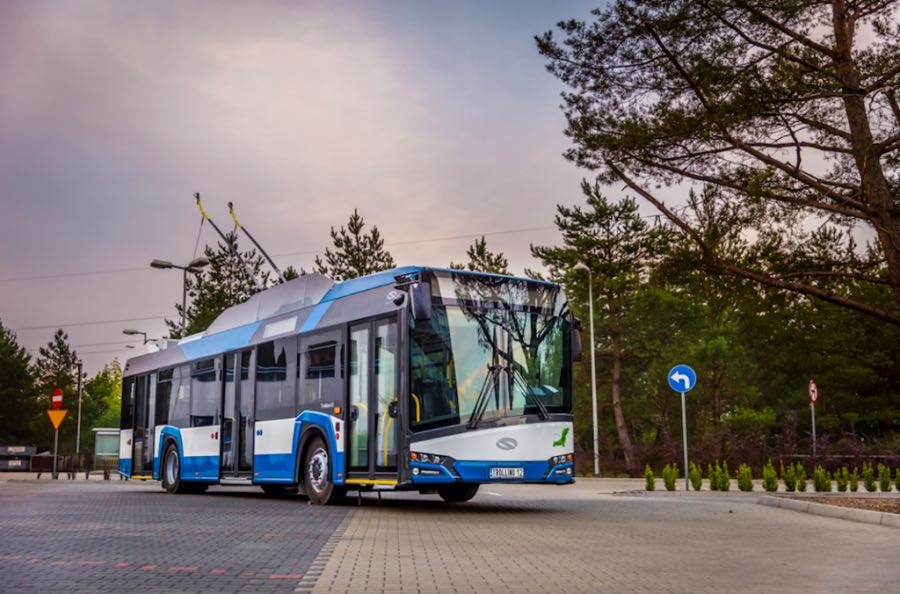
What is quite interesting in Gdynia case is that the commissioned vehicles will be fitted with additional batteries which enable driving off the traction line. In the case of the 14 Solaris Trollino 12 trolleybuses, the batteries will have a capacity of 58 kWh, whereas the 16 articulated vehicles will be equipped with 87 kWh batteries. This means that both types will be able to cover a distance of dozens of kilometres in zero-emission mode without the use of a pantograph. In addition to trolleybuses, under the contract, the company will also provide batteries that will allow the modernization of 21 other vehicles.
Czech Republic, 30 new trolleybus in four cities
Czech Republic is no exception. In 2019 trolleybus vehicles returned to Prague. 47 years later. From the beginning of July, passengers can take advantage of the new trolleybus service, initially carried out with one vehicle, on line 58 that connects Palmovka (Metro B) and Letňany (Metro C), with a length of 5 km.
In Prague, the trolleybus network remained in operation for 36 years, from 1936 to 1972. Then the network was closed, as tram and metro services were expanding rapidly.
As of spring 2020, we could mention important projects of fleet renewal in four cities. In fact, new full electric trolleybuses have been delivered to the Teplice network, and others are being ordered. Being more specific, Opava has ordered new vehicles, Ostrava has published a call for tenders and Marianske Lazne‘s order is close to delivery. We are talking about a total of 30 trolleybuses involved in these projects. The Czech manufacturer Skoda Electric is the main player.
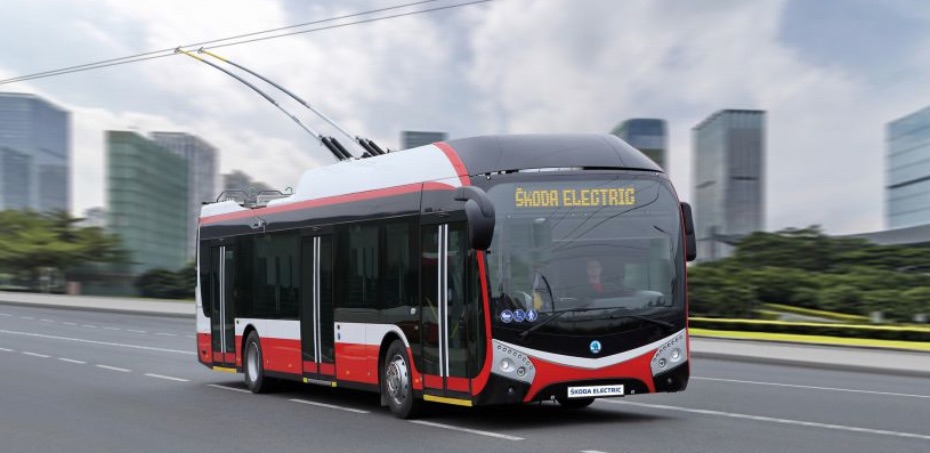
A huge batch of trolleybuses has been ordered in Lithuania in late 2018. No less than 85 Trollino 12 have been ordered by the public transport operator of Kaunas city, UAB Kauno Autobusai, in Lithuania.
The delivery of the zero-emission vehicles from Bolechowo shall be carried out over a period of 15 months from the signing of the contract, reported Solaris in a press release.
Also in Czech Republic, 35 new trolleybuses Škoda 33Tr with batteries are head to České Budějovice, following a deal in February 2023.
The first 14 trolleybuses will be handed over to the transport provider in the first half of 2025, while the last vehicle will be delivered in mid – 2026.
Latin America, Mexico City bets on Yutong trolleybuses
But Europe is not the only region where battery trolleybus vehicles are gaining ground. Mexico City, one of the core cities of ZEBRA project led by C40 and ICCT, took delivery of 63 trolleybuses coming from the Chinese manufacturer Yutong and issued in March 2020 a new procurement for as many as 50 articulated ones.
The new trolleybuses for STE, according to the tender requirements, will be of the latest generation, zero emissions (i.e. equipped with In Motion Charging technology), 18 meters long, able to carry at least 140 passengers (at least 35 seated). Among the specifications it is pointed out that the trolleybuses must be able to run out of the wire network for at least 25 kilometers.
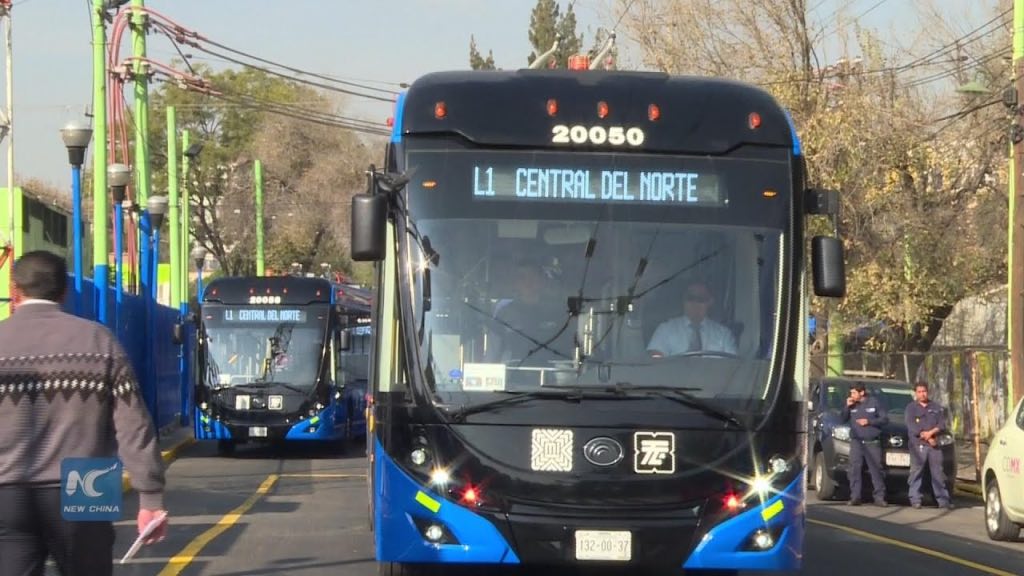
Brazil: the first 4-axles trolleybus
With the delivery in June 2024 of the first new-generation 4-axle trolleybus, Metra’s fleet renewal plan for the suburban trolleybus network of EMTU (Empresa Metropolitana de Trasportes Urbanos) of Sao Paulo began.
The expansion plan presented in 2023 envisaged the purchase of 80 new trolleybuses equipped with IMC technology to be used on the future 17.5 km BRT line from Sao Bernardo do Campo to Sacoma, an interchange location with metro line 2 in the São Paulo metropolitan area.
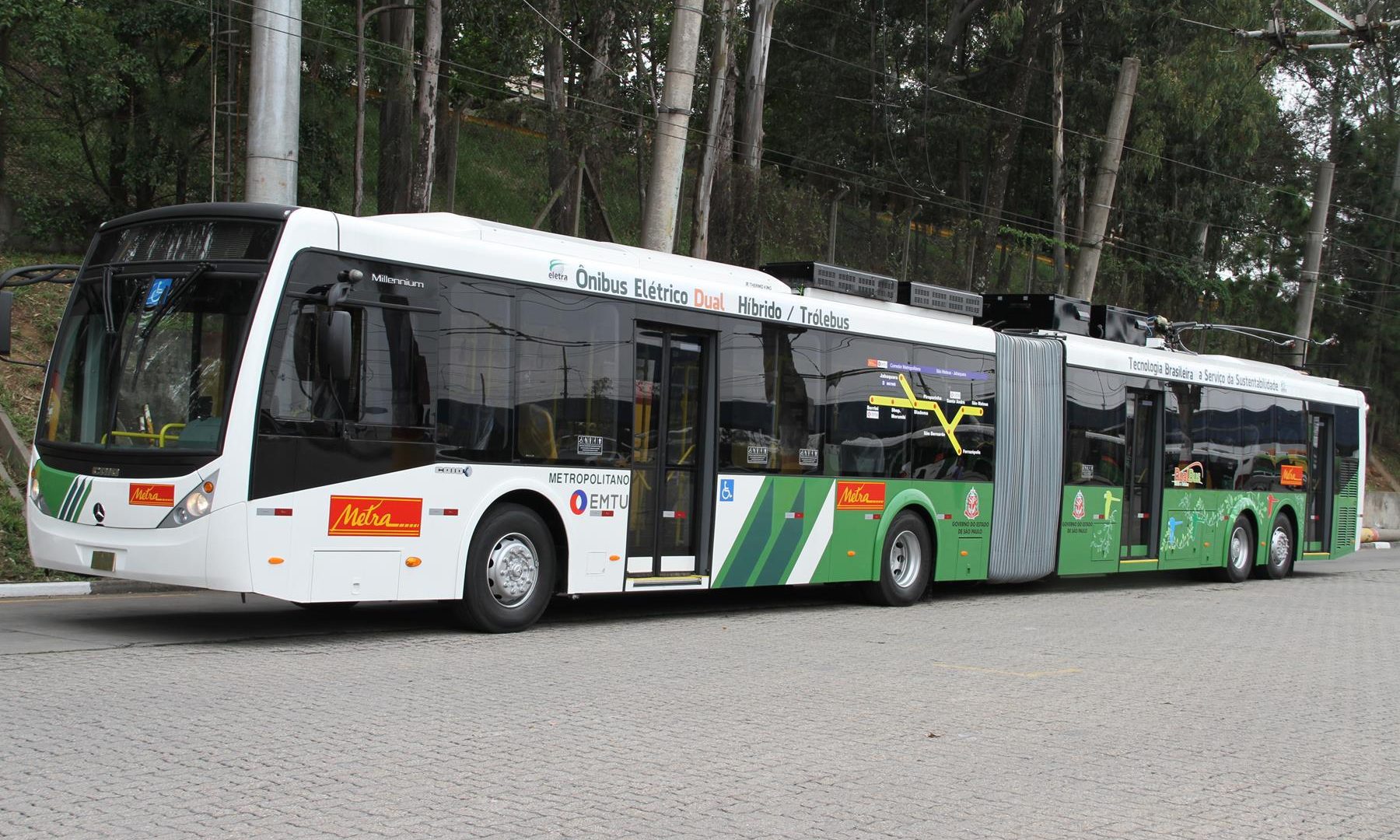
At the end of May 2024, the prototype trolleybus was delivered, the result of the joint work of four manufacturers: Mercedes for the chassis, CAIO of São Paulo for the bodywork (eMillennium model), Electra ( Tecnologia de Tração Elétrica) of São Bernardo do Campo – São Paulo for the electrical equipment and WEG for the motor and lithium iron phosphate batteries.




